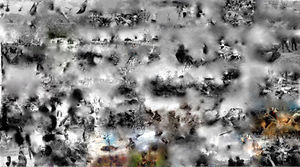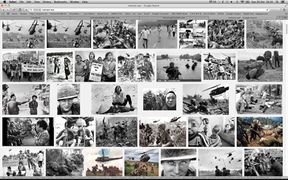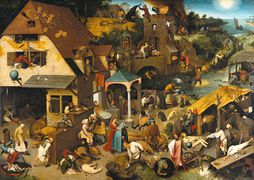Unintended Images: Difference between revisions
No edit summary |
No edit summary |
||
| Line 7: | Line 7: | ||
|Description=Artyom Kocharyan | |Description=Artyom Kocharyan | ||
Artyom’s work entitled “Broken Images” is a series of digital paintings that are based on search results of Google | Artyom’s work entitled “Broken Images” is a series of digital paintings that are based on image search results of Google. In his work Artyom examines the dynamics of the current image culture, namely their multiplicity within the online world. | ||
As a result of image proliferation the online world become a space where images appear to their viewer within multiplicity. Google’s image search is a prime example of this phenomenon. By gathering multiple images | As a result of image proliferation the online world become a space where images appear to their viewer within multiplicity. Google’s image search is a prime example of this phenomenon. By gathering multiple images within one space, Google creates a new ‘large image’ that is being framed within our screens. However as a tool that is intended to find single images, Google disregards the aesthetics of those ‘large images’, since it arranges individual images according to their relevance to the topic rather then their visual coherence with each other. As a result this ‘large images’ appear as ‘broken’ and fragmented and refuse to be read as a single image. | ||
Artyom’s work reflects on the incoherence that comes with the multiplicity of images. He uses screenshots of different Google search result, which he manipulates within Photoshop by using ‘healing’ and ‘patching’ tools. For his series Artyom drew inspiration from several paintings, particularly those of Pieter Bruegel the Elder, which regardless of their overcrowded and noisy aesthetics manage to remain their wholeness as an image. Those paintings | Artyom’s work reflects on the incoherence that comes with the multiplicity of images. He uses screenshots of different Google search result, which he manipulates within Photoshop by using ‘healing’ and ‘patching’ tools. For his series Artyom drew inspiration from several paintings, particularly those of Pieter Bruegel the Elder, which regardless of their overcrowded and noisy aesthetics manage to remain their wholeness as an image. Those paintings take into account the gaze of the viewer, providing pathways through which human eye can travel and explore the image. Similar Artyom’s work attempts to rehabilitate those ‘broken’ images and reintroduce a coherence that would allow them to be read as a whole. | ||
}} | }} | ||
<gallery mode="packed-hover"> | <gallery mode="packed-hover"> | ||
Revision as of 17:59, 21 May 2015
| Unintended Images | |
|---|---|
| Creator | Artyom |
| Year | 2015 |
| Bio | Artyom Kocharyan (AM) is visual artist based in Rotterdam. His work explores the contemporary visual culture, namely the culture of images that increasingly dominate the world of communication. Artyom’s work is concerned with the representation aspect of images and their ability to determine our vision of the world. Artyom is engaged with the representation apparatus that is peculiar to current digital and online culture. |
| Thumbnail | |
| Website | www.artyomkocharyan.com |
Artyom Kocharyan
Artyom’s work entitled “Broken Images” is a series of digital paintings that are based on image search results of Google. In his work Artyom examines the dynamics of the current image culture, namely their multiplicity within the online world.
As a result of image proliferation the online world become a space where images appear to their viewer within multiplicity. Google’s image search is a prime example of this phenomenon. By gathering multiple images within one space, Google creates a new ‘large image’ that is being framed within our screens. However as a tool that is intended to find single images, Google disregards the aesthetics of those ‘large images’, since it arranges individual images according to their relevance to the topic rather then their visual coherence with each other. As a result this ‘large images’ appear as ‘broken’ and fragmented and refuse to be read as a single image.
Artyom’s work reflects on the incoherence that comes with the multiplicity of images. He uses screenshots of different Google search result, which he manipulates within Photoshop by using ‘healing’ and ‘patching’ tools. For his series Artyom drew inspiration from several paintings, particularly those of Pieter Bruegel the Elder, which regardless of their overcrowded and noisy aesthetics manage to remain their wholeness as an image. Those paintings take into account the gaze of the viewer, providing pathways through which human eye can travel and explore the image. Similar Artyom’s work attempts to rehabilitate those ‘broken’ images and reintroduce a coherence that would allow them to be read as a whole.



